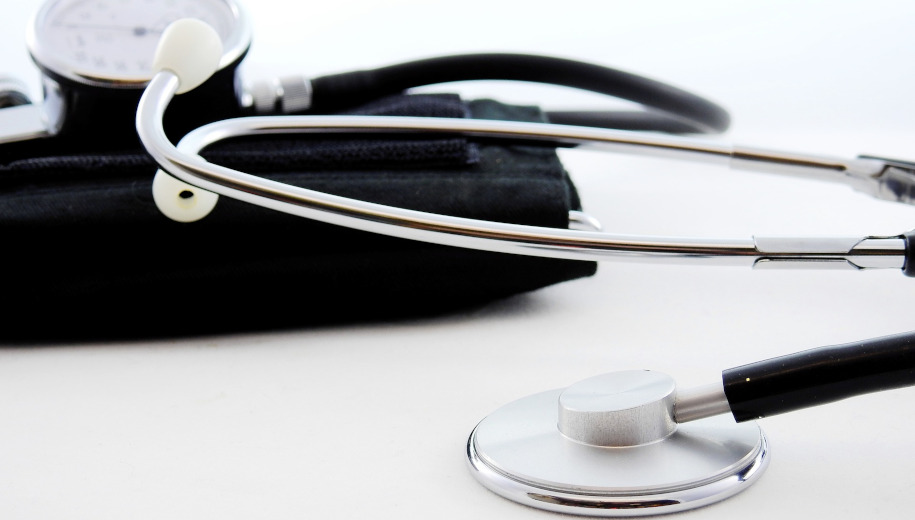By: Ranjit Devraj
Send to a friend
The details you provide on this page will not be used to send unsolicited email, and will not be sold to a 3rd party. See privacy policy.
[NEW DELHI] A traditional stethoscope and physical examination is 95 per cent accurate in detecting heart ailments in children and remains a valuable diagnostic tool in an era of increasing reliance on costlier echocardiography, a study suggests.
Published in the British Medical Journal, the study says that the high accuracy of physical examination in differentiating the normal heart from the abnormal means the use of echocardiograms and associated expenses could be reduced.
Echocardiography — which uses ultrasound technology to image the beating heart — is a standard tool that helps physicians visualise the size and shape of the heart, detect damage or abnormality to the valves and tissues and also determine the organ’s capacity to pump blood.
In contrast, stethoscopes allow the doctor to hear sounds such as leaks, murmurs and irregular rhythms that indicate abnormalities in the heart, lungs and other organs. In existence for nearly 200 years, the stethoscope has come to symbolise the doctor’s profession and learning to use one is compulsory in medical schools.
“The evidence generated suggests that writing the obituary of the stethoscope is perhaps not justified as yet”
Manu Raj, Amrita Institute of Medical Sciences and Research Centre
“Our paper compares the good old clinical examination of the child’s heart against the gold standard of echocardiography,” says Manu Raj, corresponding author and professor of paediatrics and consultant in public health research at Amrita Institute of Medical Sciences and Research Centre in Kerala, India.
Raj describes the study — conducted at the paediatric cardiology clinic of a tertiary referral hospital in South India — as a “different way of looking at clinical skills in the current era of machine-based diagnosis”.
“The evidence generated suggests that writing the obituary of the stethoscope is perhaps not justified as yet,” he told SciDev.Net.
Groups of children, totaling 545, with five common cardiac conditions were physically examined by paediatric cardiology fellows and consultants. The accuracy of physical examination by fellows and consultants was determined by comparing the findings with those using echocardiography.
Physical examination could differentiate normal hearts from abnormal ones with an accuracy of 95 per cent for fellows and 96 per cent for consultants. For all abnormal hearts, the results showed the consultants doing better than fellows on sensitivity, specificity and accuracy.
“The results of the study indicate that doctors are really good if trained well in physical examination of the little hearts for a cardiac diagnosis and also have the attitude to do it systematically,” Manu Raj said.
Leading paediatricians were in general agreement with the findings of the study but emphasised the value of echocardiography in addition to physical examination of the child, including the use of a stethoscope to listen to sounds from the heart, lungs and intestines which may reveal abnormalities.
“While physical examination remains the most important screening check, anything suspicious should be checked with echocardiography,” says Sujit Chowdhary, a paediatric surgeon at the Apollo Hospitals, New Delhi. “In my work, I use echocardiography to complete diagnosis to determine the risk profile, for making a detailed pre-operative evaluation and assessing post-operative outcomes — I consider that to be essential.”
Dinesh Raj, paediatric consultant at the Holy Family Hospital, New Delhi, says: “It is true that clinical examination and diagnosis have taken a back seat because of the easy availability of confirmatory diagnostic tests. Given the huge patient burden, clinicians often resort to lab tests instead of relying on basic history and clinical examination on which the entire medical training is based.
“Diagnosis of heart diseases in children is one situation in which a good history and clinical exam can lead to a correct diagnosis. The advent of echocardiography has certainly reduced reliance on clinical examination for childhood heart ailments,”
He said one reason why doctors resort to echocardiography is the fear of litigation. “Doctors, these days, err on the side of over investigation, just for the sake of documentation so that they cannot be questioned later on if a heart lesion is missed,” says Raj. “Patients also feel satisfied when a laboratory test is performed to confirm a suspicious heart issue.”
He also questioned the usefulness of a study conducted in just one institution, noting the wide-ranging quality of medical training around the world. “The physical examination and echocardiography were conducted by fellows and consultants trained in paediatric cardiology rather than by paediatricians and family physicians who typically have limited skills in the field,” he added.
The authors of the paper admit that additional studies are needed to test the skills of general paediatricians in cardiac examination and to assess the impact of targeted training in the field. But they add that the results of the study suggest there is value in acquiring physical examination skills to diagnose cardiovascular issues.
This piece was produced by SciDev.Net’s Asia & Pacific desk.
















